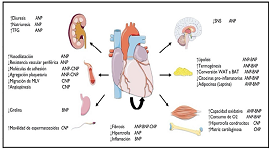
Asia Pacific Academy of Science Pte. Ltd. (APACSCI) specializes in international journal publishing. APACSCI adopts the open access publishing model and provides an important communication bridge for academic groups whose interest fields include engineering, technology, medicine, computer, mathematics, agriculture and forestry, and environment.

Discussion on the value of 48 h ambulatory electrocardiogram
Vol 2, Issue 2, 2021
Download PDF
Abstract
Objective: The statistical number of cases was 73 times. 66 patients entered the study, including 31 males and 35 females, aged from 17 to 86 years. Firstly, the accurate big data analysis was carried out on 66 cases of ambulatory ECG, and then the corresponding time that can be compared and analyzed before and after 24 h was determined through the time (T) RR interval scatter diagram. The changes of 24 h ECG scatter diagram were observed, and the total number of heart beats and the number of premature beats were counted by the scatter diagram technique, and then compared and analyzed according to the type of arrhythmia. Results: A frequent or occasional premature beats: 52 patients (59 times), 26 males and 26 females, aged (56.1 ± 15.4) years; the effective analysis duration was (22.40 ± 1.19) H. There was a significant correlation between the number of heart beats before and after treatment (r = 0.934, p = 0.000). b. Persistent arrhythmia: 4 cases of persistent atrial fibrillation (referred to as atrial fibrillation), 1 case of frequent atrial and ventricular concurrent arrhythmia, 2 males and 3 females, aged (68.4 ± 9.4) years; the effective analysis duration was (22.68 ± 0.74) H. The t-RR scatter plot and Lorenz RR scatter plot of these patients had self-similarity before and after 24 h. There was no significant difference in the total heart beat number before and after 24 h[(111796 ± 16439) vs (111262 ± 16421), p = 0.624], and the total heart beat number before and after 24 h was significantly correlated (r = 0.991, p = 0.001); the qualitative diagnosis of long interval in 3 patients with atrial fibrillation was consistent 24 hours before and after diagnosis. c. Paroxysmal arrhythmia: 9 cases, 3 cases of paroxysmal atrial flutter, 5 cases of paroxysmal atrial fibrillation, and 1 case of paroxysmal vertical separation of sinus node function. There were 3 males and 6 females. The age was (71.2 ± 12.7) years. The effective analysis duration was (22.67 ± 0.74) H. Conclusion: 24 h ambulatory ECG can meet the requirements for patients with frequent or occasional premature beats and persistent arrhythmias, while 48 h ambulatory ECG may be necessary for patients with paroxysmal arrhythmias.
Keywords
References
- Zhang J, Chatham JC, Young ME. Circadian Regulation of Cardiac Physiology: Rhythms That Keep the Heart Beating. Annual Review of Physiology. 2020; 82(1): 79-101. doi: 10.1146/annurev-physiol-020518-114349
- Irwin JM, McCarthy EA, Wilkinson WE, et al. Circadian occurrence of symptomatic paroxysmal supraventricular tachycardia in untreated patients. Circulation. 1988; 77(2): 298-300. doi: 10.1161/01.cir.77.2.298
- Xiang J. Timed RR-interval scatter plots and reverse technology. Current Medical Science. 2020; 40(6): 1191-1202. doi: 10.1007/s11596-020-2308-8
- Xiang J. Lorenz RR scatter plot reverse technique and scatter plot block extraction technique. In: Xiang J, Jing Y (editors). Clinical electrocardiography. Wuhan: Hubei Science and Technology Press; 2016; pp. 85-98.
- Xiang Q, Yang Y, Liu W, et al. Scatter plot and ECG characteristics of a case of atypical second-degree type I atrioventricular block with atrioventricular reentrant atrial echo and reentrant tachycardia. Chinese Journal of Cardiac Pacing and Electrophysiology. 2021; 35(4): 368.
- Xiang J. Lorenz RR scatter plot characteristics and electrophysiological significance of big data atrial parallel rhythm. In: Xiang J, Jing Y (editors). Clinical electrocardiography. Wuhan: Hubei Science and Technology Press; 2016; pp. 143-148.
- Xiang J. Lorenz RR scatter plot characteristics and electrophysiological significance of big data ventricular parallel rhythm. In: Xiang J, Jing Y (editors). Clinical electrocardiography. Wuhan: Hubei Science and Technology Press; 2016; pp. 153-159.
- Xiang J, Li X, Chen Y. Separation of sinus node function revealed by ECG scatter gram. Chinese Journal of Car-diac Pacing and Electrophysiology. 2013; 27(2): 101.
- Xiang J, Li X, Chen Y. A case of sinus rhythm complicated with sinus escape and premature beat was diag-nosed by time RR interval scatter plot and reverse technique. Chinese Journal of Cardiac Pacing and Electro-physiology. 2013; 27(5): 457.
- Li F. Combination of chaos theory and ECG. Chinese Journal of Cardiac Pacing and Electro-physiology. 2013; 17(6): 407.
Supporting Agencies
Copyright (c) 2021 Jining Zhou, Jintao Xiang, Xin Lai, Fang Wang, Xiaochun Mu, Limei Hu, Lijuan Ye, Xiaoqing Li, Yuanxiu Chen

This work is licensed under a Creative Commons Attribution 4.0 International License.

This site is licensed under a Creative Commons Attribution 4.0 International License (CC BY 4.0).

Prof. Prakash Deedwania
University of California,
San Francisco, United States




